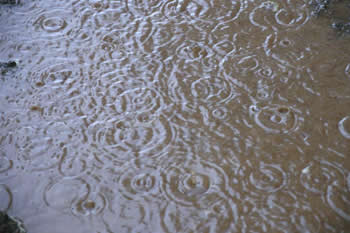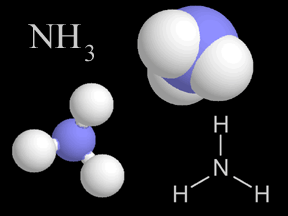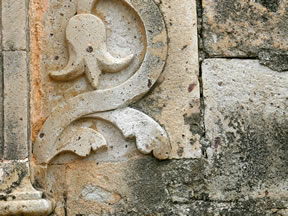Acid rain damages buildings like this one in Copola, Mexico.
Click on image for full size
Courtesy UCAR
Acid Rain
Have you ever heard of acid rain? Acid rain is what happens when some types of air pollution is washed out of the sky by rain. Sometimes, the pollution can be washed out by snow, sleet, hail, mist or fog, but it is still called acid rain.
Power plants, factories, houses and cars all put pollution into the atmosphere. Sometimes these chemicals return directly to the ground. The rest of the time, they mix with water in the air to form acids. Once the acids form, they can be carried a long way by the wind before being washed out of the air by rain, snow or hail. That is why we call it acid rain.
During the 1970s, scientists in Sweden and Norway noticed that acid rain was hurting their trees and fresh water. Most of the acid rain was caused by pollution that came from other countries. After that, scientists knew that acid rain was an international problem.
Acid rain can have harmful impacts on ecosystems. It makes the soil and water where it falls more acidic. This can hurt or kill plants and animals. Making water more acidic can lead to smaller fish populations. Other species that live in the water are also hurt, like frogs, snails and crayfish. Acid rain affects trees, making them weaker by damaging their leaves. Some types of stone, such as limestone and marble, can be slowly dissolved in acid rain. This can damage buildings and statues.
You might also be interested in:

Biomes are large areas of the world where there are similar plants, animals, and other living things. The living things are adapted to the climate. Explore the links below to learn more about different
...more
Have you ever heard of air pollution? Air pollution is not new. 700 years ago, when people started burning large amounts of coal 700 years ago in London, England, they complained about the dust and soot
...more
Nitric acid is a very strong kind of acid. If you got some on your skin, it would burn you! Nitric acid has nitrogen, oxygen, and hydrogen atoms in it. Earth's atmosphere has a very, very tiny bit of nitric
...more
Sulfuric acid is a very common type of acid. Acid rain has sulfuric acid in it. Acid rain harms plants, fish, and other living things. A type of air pollution causes acid rain. When people burn fossil
...more
Raindrops form when tiny water droplets collide together in clouds to form bigger ones. When they get too heavy, rain falls out of the clouds. Rain is more than 5mm in diameter. The types of clouds that
...more
When you think of chemistry, do you think about mixing colored liquids in test tubes and maybe making an explosion... or at least a nice puff of smoke? Did you know that a lot of chemistry happens in Earth's
...more
Ammonia is a kind of gas. Ammonia molecules (NH3) have hydrogen and nitrogen atoms in them. The air you breathe has a tiny bit of ammonia in it. When plants and animals die and decay, they give off ammonia.
...more















